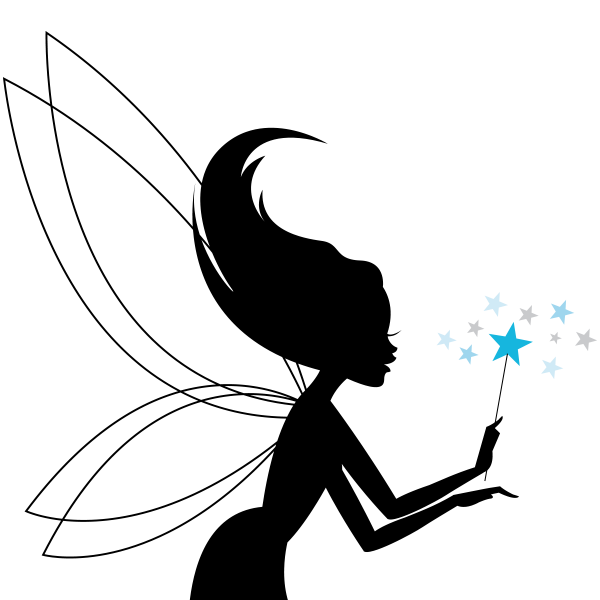By Chandra Turner
COVID makes it tough to mentor. But let’s be real, young editors haven’t been getting the mentorship and training they have needed even before the pandemic. With massive staff cuts at nearly every media brand, editorial leaders have been forced to do two or three times the work they once did — and at a faster pace. That leaves little time to nurture the next generation of talent. As a recruiter and career coach, I see this deficiency every day. Hiring managers tell me how they struggle to find candidates who can edit without oversight. And my Gen Y and Z coaching clients are hungry for mentors who can guide them to be stronger editors.
I took for granted the mentoring I received as a whippersnapper in the late 90s and early 2000s. As a junior editor at Good Housekeeping and Glamour, when I was supposed to be moving key copy (raise your hand if you remember key copy!) from one editor’s outbox to another’s inbox, I’d hijack a pile, return to my desk and soak in the edits from the layers of editors’ notes on raw manuscripts. Those color-coded handwritten strike-outs, insertions, and margin comments taught me so much about how to be an editor. Part of my job back then, which was often the case for those of us at the bottom of the ladder, was to input the hard-copy changes into the K4 or Quark, the CMS of the time. Doing so, I learned how to shapeshift a voice for a particular audience, turn verbose prose into snappy copy, and recognize cliche, crutches, and other lazy writing.
By deciphering those scrawls, I witnessed how so many brilliant minds — Ellen Levine, Diane Salvatore, Ellen Seidman, Diane Baroni, Evelyn Renold, Cindi Leive, Judy Coyne, Michele Shapiro, Claire Connors, I’m talking about you! — could have vastly different opinions on how to structure a piece. And yet they could all be right. (The EIC always won, tho.)
Seeing the raw copy beneath all those edits was instructive in a way that often gets lost when editing in a CMS or in digital software (even if it does make the process a lot more efficient!). Young editors are missing out from a process that is all but dead in today’s digital publishing world. But that doesn’t mean we can’t still train the next generation of talent. It just takes a bit more creativity.
If we want the craft of editing to survive and the bar to remain high, it is in our best interest to cultivate and train the next generation of editorial leaders.
Here are some ways you can start now:
1. Let them watch. In this weird world we live in right now, you can’t exactly ask your junior editor to pull up a chair. But you can invite them to watch you edit a piece of content live, on screen. Choose a story that needs a lot of work and share it with them first so they can digest it and visualize the edit in advance. Ask them for their thoughts: What did the writer do well? What is missing? What should come out? Then talk them through your edits. You can do this on the phone together, share your screen in a Zoom, or share a Google doc and use a chat tool to talk as you work.
Next time, you can ask them to take a crack at an edit before you get your hands on it. Let them mark up the copy to the writer, offer their suggested changes, and present to you how they would fix it if they were in charge. Of course you’ll need to bake in a day or two in your production cycle to pull this off, especially if their edit is weak, but the practice is invaluable.
If you don’t have time for those exercises, at the very least, show your track changes. This may require that you pull the story out of the CMS, copy and paste it into a Google doc, and make edits with the Suggesting feature on so they can see your strikethroughs and rewrites. (You’ll then need to save a copy of this version to share with them before accepting changes and copying and pasting back into your CMS, praying for no formatting wonkiness.) Admittedly learning this way can be a challenge. But it’s better than your junior ed missing out on what happened between Point A and Z.
2. Let them inside your brain. Oh, it’s so tempting to just fix the copy and click Publish. We like to tell ourselves that the writer or editor we’re editing will read the final product and understand why we made the changes that we make. In reality, they don’t. They are reading with the same righteous indignation that you read your own copy when someone rewrites you! (At least when we were whippersnappers; it takes a while to get a thick skin!)
It’s instinctive to be defensive. And when you are defensive, you don’t learn. You roll your eyes and move on to the next story and make the same mistakes. Break the cycle by explaining your decision making and showing your thought process. It’ll serve you and them better in the long run. And save you time.
Just showing your strikethroughs and line edits is not enough. Annotate your decisions — show your thought process in margin notes. Learning to edit is learning to make good decisions. To make good decisions, you need to know the questions to ask yourself as you work through a piece of content. What is the point of this piece? Do I have the context to understand this as a first-time reader? Who is the audience? What is the voice? Who says this is the truth? How can I say this in half the words?
Even now, several years after working at Parents, I ask myself, What would Dana Points do? when I’m challenged by a piece of content.
3. Copy them. An easy way for junior editors to pick up skills is to be a fly on the wall to your correspondence. Chose a story and copy them on your emails back and forth with the writer on the full life cycle — pitch response, assignment letter, contract negotiation, all drafts, and even payment. As an editor at Parents and CosmoGirl, I would ask the writer first if they were OK with a whippersnapper interloper following along in our discussions. I never had anyone decline; most likely they learned the same way. Besides, it’s important to have the writer’s buy-in. To make this exercise efficient, the writer has to remember to always copy the junior editor on their replies.
Make this exercise even more helpful: Copy your junior editor on chatter internally too. Chances are you work with a team of people who help build out that piece of content — art, tech, social media, legal, sales, etc. Pull your whippersnapper into the loop on your correspondence with them, too.
4. Invite them. Add your whippersnappers to your Slack channels and ask them to attend brainstorming, planning, and process meetings. If you’re like most teams these days, ideas meetings are few and far between. But when you do gather folks together for an old fashioned pitch-fest, don’t forget the intern, assistants, and junior editors. They often have the freshest germs of ideas anyway. (That sounded gross, but you know what I mean!) And even if they don’t, it’s important for them to see how good ideas turn into great ones. How seasoned editors can twist an okay idea to an original and relevant one. Attending ideas meetings allows them to recognize a good idea so they can spot one later in the wild. Just listening to what makes the cut and what gets shut down is crazy helpful.
Understanding the editorial process is something that we take for granted when we’ve been privy to it for years. But the information provided by these meetings, as tedious as they may seem, is invaluable. They show how a piece of content is developed from soup to nuts and provide much-needed context to why decisions are made. For instance, you could learn that the story was cut in half not because it was badly written, but because it now has to fill a hole in a weekly newsletter, where attention spans are shorter. Or the design you wanted for the story package didn’t work out or you couldn’t get the rights to that photo, so the entire thing had to be re-imagined.
If you are back in the office (unlikely) you can have your junior eds sit in a corner of the conference room and listen in. If you are Zoom-ing, let them join with mute on and camera off. The point is to absorb, not contribute. After all, there is still a ton of content you have to crank out.
5. Connect them. It takes a village! Connect your whippersnappers to other editors on your team who can provide guidance and mentorship. It doesn’t always have to come from senior leadership. Make a point to connect junior team members with each other — especially now since team lunch and happy hours are cancelled. Offer to reimburse them for lunch if they join a chat and chew Zoom call or encourage them to start a Slack channel just for the junior team. Sometimes it’s more beneficial (and fun) to learn by shadowing an editor only a rung or two above you on the ladder. And they will likely make lifelong friends this way, too.
Think beyond editorial. One thing that we got wrong in the old days was not letting editors peek over the wall. Having that church and state divide did wonders for preserving editorial integrity. But it was a major disservice to editors as we were cut out of business decisions. It wasn’t until I was an executive editor, 10+ years into my career, that I worked with the marketing or sales teams or was privy to any kind of revenue strategy discussions. For better or for worse, this has changed. Still, junior team members are likely not working closely with folks in sales, marketing, tech, etc. and could use a little push to connect with people across teams. Introduce, invite, and connect them!
6. Be them. Editing is a skill that changes as the world and the industry changes. At different points in our careers we all move back and forth from being mentors to mentees. To thrive in this industry is to constantly be learning. So continue to ask questions, read new voices and writing styles, and challenge yourself and how you do things — no matter if you are a recent grad or a 30 year veteran. It’ll make us all stronger editors.
Chandra Turner is founder and CEO of Ed2010 and Talent Fairy. She is a talent recruiter specializing in content and editorial roles. She also offers personalized career coaching for media professionals at all stages of their career.
“How I Learned to Edit”

We asked the Ed2010 and Talent Fairy community of current and former magazine editors to hark back to when they were whippersnappers learning how to shape a story. They waxed poetic about the good ole days and offered some smart suggestions on how they mentor in today’s world.
“An editor I worked for at Glamour gave me inventory pieces and just let me mark them up! Then we’d go over my edits together. I also physically made all the edits to my bosses’ copy and would ponder each brilliant one from the then executive editor at the time!” — Elizabeth Goodman Artis, Editor-in-Chief, Shape and former editor at Fitness and Glamour
Read more
Sign up for Ed’s weekly newsletter for Ed2010 and Talent Fairy exclusive listings, offers, and insider career advice.




